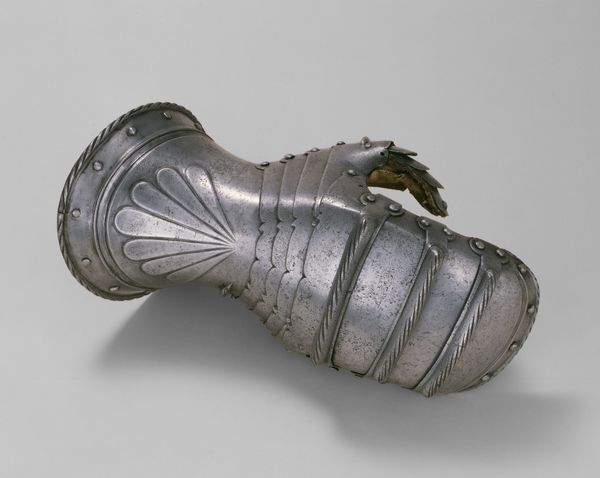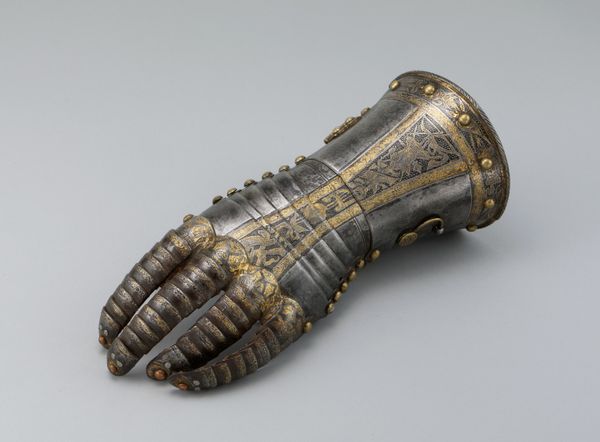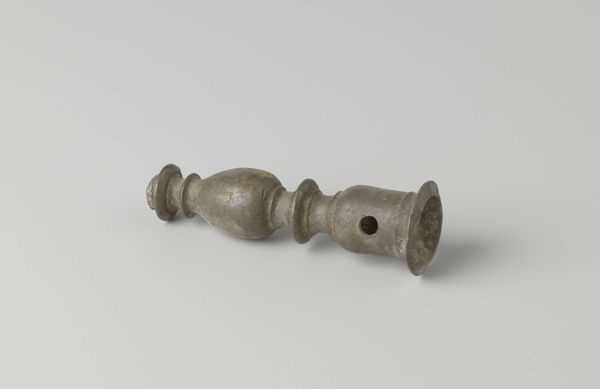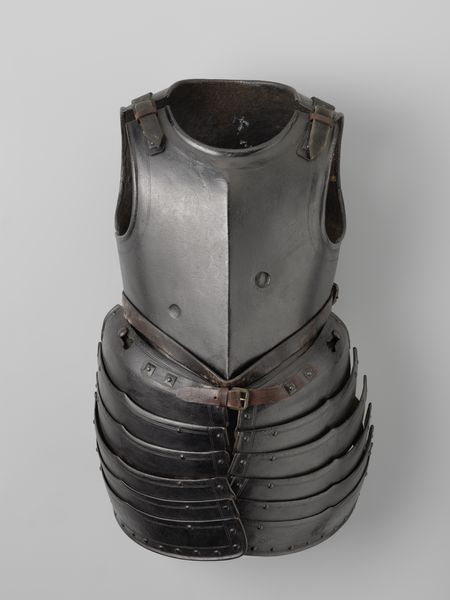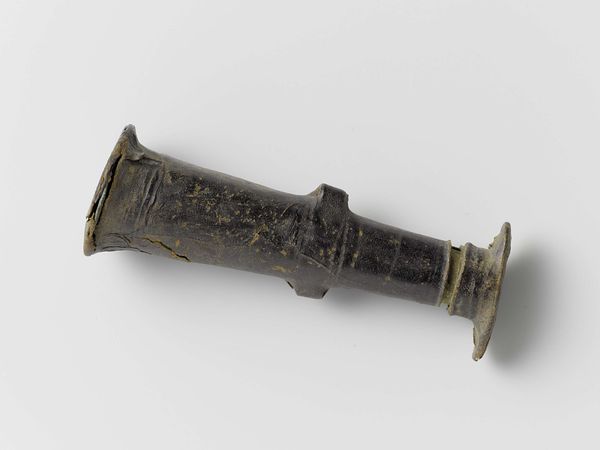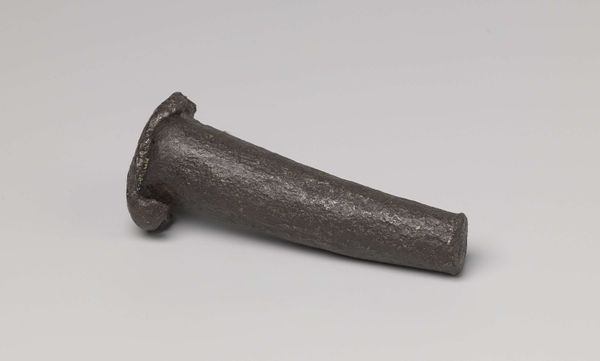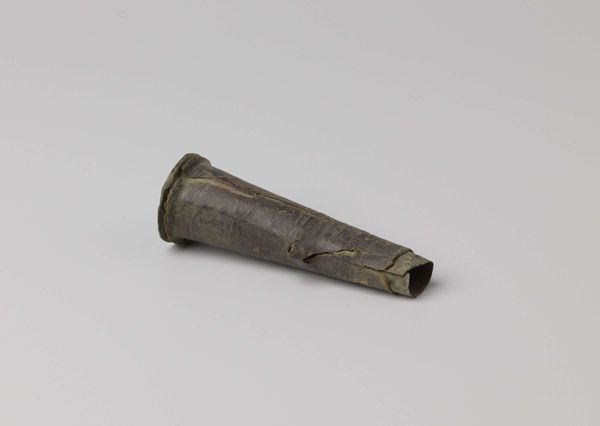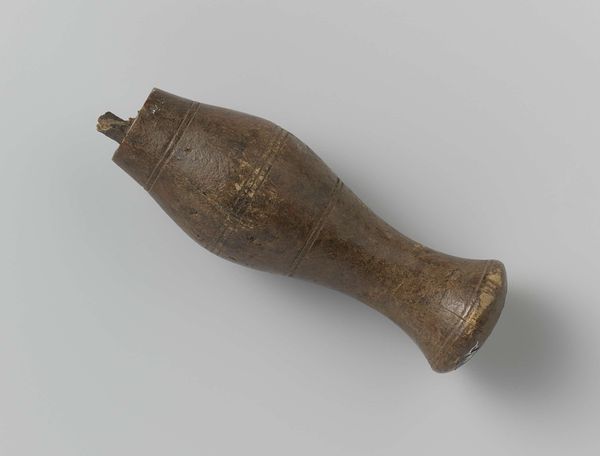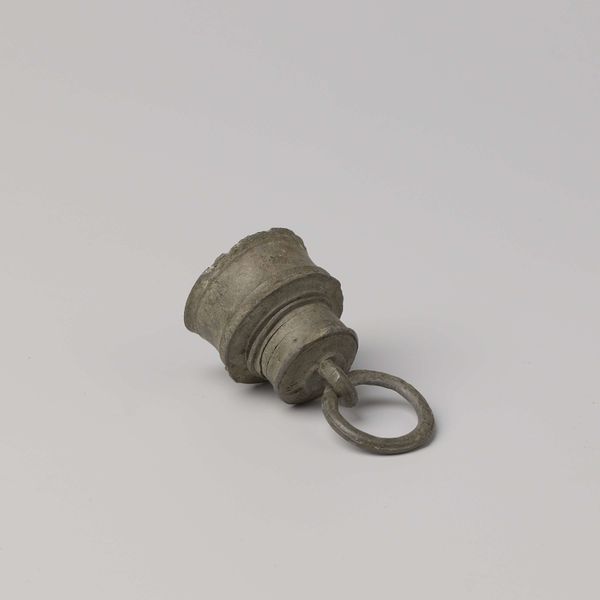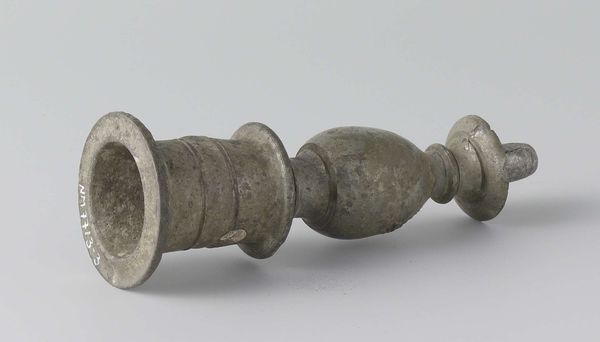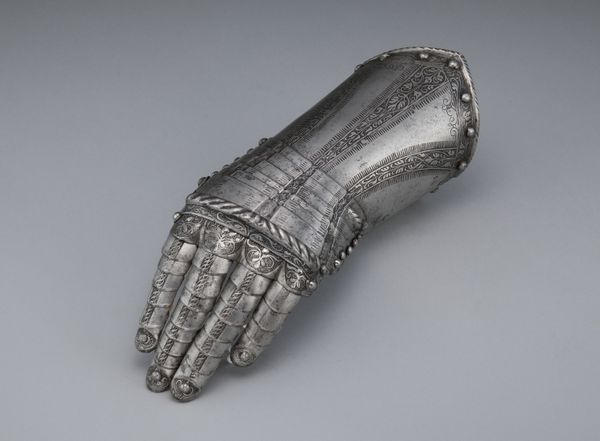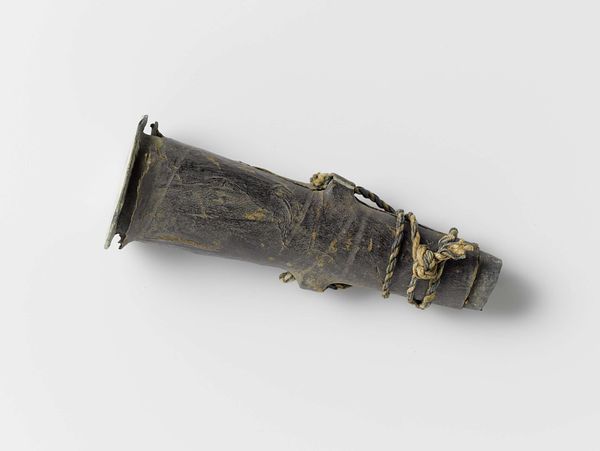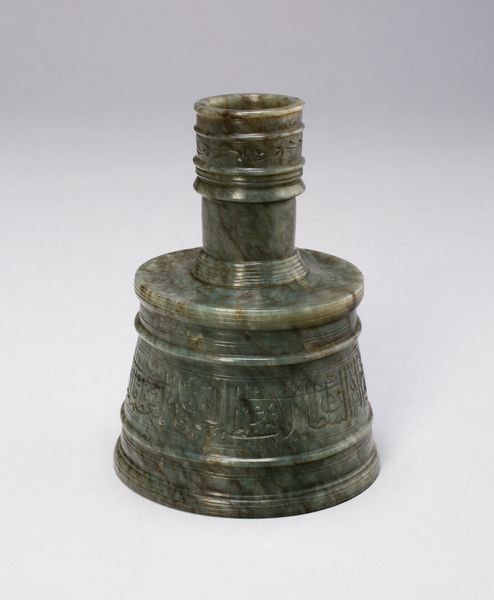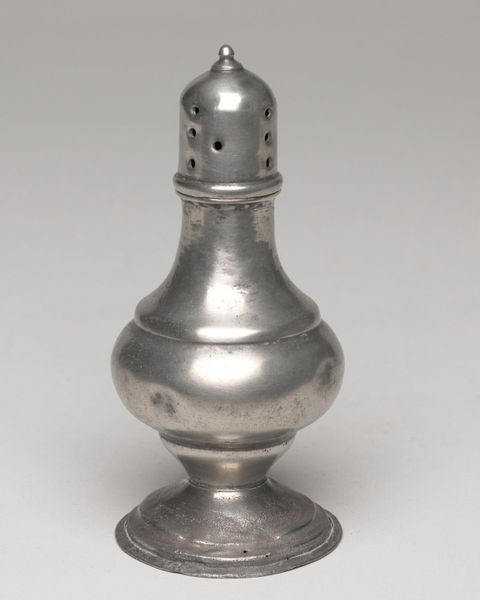
carving, metal, sculpture
#
medieval
#
carving
#
metal
#
sculpture
#
armor
#
arm
Dimensions: L. 26.7 cm (10 1/2 in.)
Copyright: Public Domain
Curator: Looking at this photograph of the Mitten Gauntlet for the Left Hand, crafted around 1524 by Kolman Helmschmid, my immediate impression is one of layered strength. There's a compelling interplay of solid form and flexible construction here. Editor: Indeed. Armor production and function speak volumes about socio-economic stratification. A piece like this transcends mere protection; it embodies status, power, and the very real, tangible inequalities of the 16th century battlefield. Who had access to this? Who made it? Curator: Well, considering the maker was Kolman Helmschmid, the question of who made it is straightforward. I’m drawn to the precision and ingenuity of metalworking required to form and articulate it. Each plate overlaps, connected by rivets. It reveals a complex process of forging, hammering, and fitting. We see artistry married with pure utility. Editor: The details invite interrogation. Take, for instance, that raised rope design tracing along each plate. The time and skill needed suggest both pride and pressure, possibly coming from wealthy commissioners deeply invested in militaristic spectacle. How does its physicality echo ideas of embodied protection – both male and upper-class at that time? Curator: Exactly! We need to examine it materially and in context. This gauntlet would have been custom-made, implying a considerable investment of time and materials like steel. These details help connect the individual to the larger structures of power, class, gender roles, and conflict during that era. How effective was such armor? Were some metals favored, perhaps imported at great cost? Editor: Excellent questions. The craftsmanship would need to align seamlessly with its effectiveness on the field and during tournaments. This also demands questions about laborers mining raw material, as well as artisans and armorers specializing in gauntlets for combat. What can analyzing Helmschmid's works across contexts and careers teach us about guilds, international networks, and systems of production? Curator: That's where the value lies – digging deep into process! We could learn so much by reconstructing, step-by-step, the making of this singular artifact. Ultimately, it highlights how essential material culture is to the dynamics of historical class struggles. Editor: Right. It serves as a silent testament to global and class struggles embedded within artistic output throughout the ages. Reflecting on these artifacts urges us to contemplate those who were excluded. The hands this protected, and the millions this could decimate across medieval wars and conflicts.
Comments
No comments
Be the first to comment and join the conversation on the ultimate creative platform.
